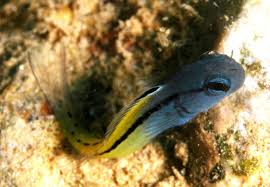Dragons in the Legends and Culture of China’s Ethnic Minorities
The dragon (龙, Lóng) is one of the most iconic and revered creatures in Chinese culture, but its representation is not limited to Han Chinese traditions. China is home to 56 officially recognized ethnic groups, each with its own unique legends, customs, and interpretations of dragons. Among these diverse communities, dragons take on various symbolic meanings, from benevolent protectors to ancestral spirits and nature deities.
This article explores how dragons appear in the myths, rituals, and cultural traditions of some of China’s major ethnic minorities, including the Zhuang, Miao, Dai, Yao, Naxi, Bai, and Dong peoples.
1. The Role of Dragons in Ethnic Minority Mythology
1.1. Dragons as Ancestral Beings
Many ethnic minorities in China believe that dragons are their ancestors. This belief is similar to Han Chinese legends but often takes on a more localized and spiritual significance.
- The Zhuang people (壮族) trace their lineage to a mythical dragon mother who gave birth to their first leader.
- The Yao people (瑶族) have myths about how a dragon spirit transformed into their earliest ancestors, symbolizing a deep connection to nature and the cosmos.
1.2. Dragons as Protectors of Water and Nature
In the legends of ethnic minorities living in mountainous and riverine regions, dragons are often rainmakers and guardians of nature.
- The Miao people (苗族) believe in water dragons that control rainfall, ensuring good harvests.
- The Dai people (傣族) see dragons as river spirits, linked to the mighty Mekong River. Their legends describe dragons living in deep water, bringing balance to the ecosystem.
1.3. Dragons as Symbols of Cosmic Balance
Many minority groups associate dragons with spiritual balance, often linking them to the sun, moon, and stars.
- The Naxi people (纳西族) tell of a great cosmic dragon that controls the harmony between heaven and earth.
- Among the Bai people (白族), dragons represent both creation and destruction, mirroring the dual forces of nature.
2. Dragons in Ethnic Minority Festivals and Rituals
2.1. The Zhuang People and the Dragon Mother Festival
The Zhuang ethnic group, the largest minority in China, celebrates the Dragon Mother Festival (龙母节, Lóngmǔ Jié) every year.
- The festival honors the Dragon Mother, a divine being believed to have given birth to hundreds of children who became the ancestors of the Zhuang people.
- During the festival, villagers offer sacrifices, sing ancient ballads, and perform dragon dances to seek blessings and protection.
2.2. The Dai People and the Dragon Boat Festival
The Dai ethnic group, primarily living in Yunnan Province, holds a Dragon Boat Festival (端午节, Duānwǔ Jié) similar to the Han Chinese tradition.
- However, for the Dai people, the dragon boats represent sacred water creatures that can communicate with river gods.
- The festival is a plea for rain and a way to ensure the health of the rivers that sustain their communities.
2.3. The Yao People and Dragon Worship in Funeral Rites
For the Yao people, dragons play an important role in funeral rituals.
- It is believed that a dragon spirit guides the souls of the dead to the afterlife.
- In some villages, shamans carve wooden dragons to place near graves, ensuring safe passage for ancestors.
3. Dragon Symbols in Ethnic Minority Art and Architecture
3.1. The Naxi People and Dragon-Inspired Calligraphy
The Naxi ethnic group, known for their unique Dongba script (东巴文), often depict dragons in ancient manuscripts and wood carvings.
- Their writing system, developed over a thousand years ago, includes pictographic representations of dragons as symbols of wisdom and divine power.
- Naxi temples and shrines feature intricate dragon murals, which are believed to protect against natural disasters and evil spirits.
3.2. The Dong People and Dragon Totem Poles
The Dong ethnic group (侗族), famous for their wooden architecture, often carve dragon motifs into bridges, pillars, and homes.
- Their Wind and Rain Bridges (风雨桥, Fēngyǔ Qiáo) are adorned with dragon carvings, symbolizing protection from floods and storms.
- In some villages, massive dragon totems are erected as part of ancestral worship ceremonies.
4. Dragon Legends of China’s Ethnic Minorities
4.1. The Miao Legend of the Black Dragon and the Golden Phoenix
Among the Miao people, one of the most famous legends is the story of the Black Dragon and the Golden Phoenix.
- According to the tale, the Black Dragon controlled all the water in the land and refused to share it.
- A Golden Phoenix challenged the dragon and, after a great battle, forced it to release the water, allowing life to flourish.
- This story is symbolic of balance and justice, emphasizing the importance of cooperation between different forces of nature.
4.2. The Bai Myth of the Dragon King of Erhai Lake
The Bai ethnic group has a famous legend about Erhai Lake in Dali, Yunnan.
- It is said that a mighty Dragon King lives in the lake, protecting the local people from droughts and disasters.
- Fishermen still perform rituals and offerings to appease the dragon and ensure bountiful fish catches.
4.3. The Dai Tale of the Nine-Headed Dragon
In Dai folklore, there is a terrifying legend of a Nine-Headed Dragon that terrorized villages.
- A brave Dai warrior defeated the dragon, but instead of killing it, he converted it into a guardian spirit.
- The story reflects the Dai belief in harmony with nature, where even dangerous creatures can become protectors if treated with respect.
5. The Influence of Ethnic Minority Dragon Legends on Chinese Culture
While Han Chinese dragon mythology dominates mainstream culture, the dragon stories of China’s ethnic minorities have deeply influenced:
- Folk literature and oral traditions, enriching China’s mythological landscape.
- Local religious practices, where ethnic minorities maintain indigenous beliefs alongside Buddhism, Taoism, and Confucianism.
- Regional celebrations and rituals, where elements from ethnic minority dragon traditions are incorporated into larger Chinese festivals.
Conclusion
Dragons in China’s ethnic minority cultures are far more than mythical creatures—they are gods, ancestors, protectors, and symbols of cosmic balance. From the Zhuang Dragon Mother to the Miao Black Dragon, these legends reflect the diverse ways different ethnic groups connect with nature, ancestry, and spirituality.
By preserving these stories, China’s cultural heritage remains rich and multifaceted, offering a deeper understanding of how dragons continue to shape identity, tradition, and folklore across the country.



